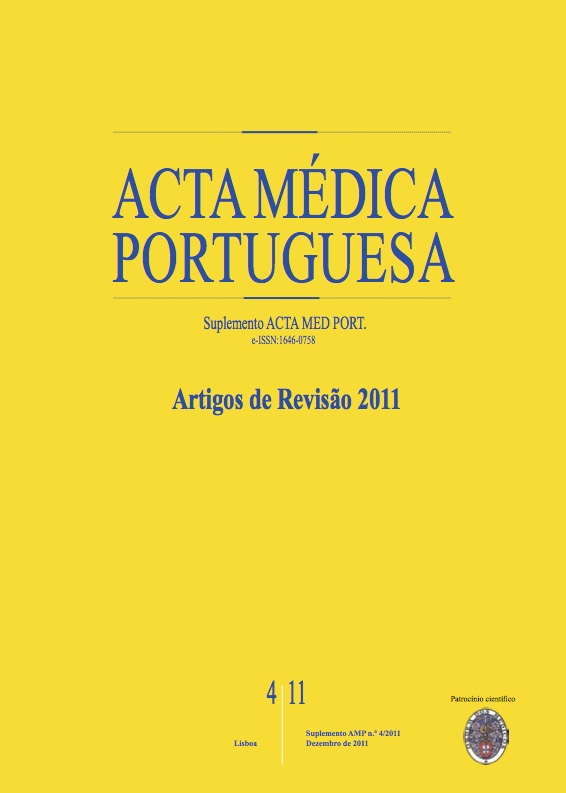As quimiocinas e os seus receptores: características e funções fisiológicas.
DOI:
https://doi.org/10.20344/amp.1571Resumo
Chemokines are members of a large family of small soluble proteins, which were discovered by their adhesion control, chemotaxis and leukocyte activation abilities. Nevertheless, it is now known they are involved in other equally important functions, namely, angiogenesis, haematopoiesis, embryologic development, B and T cell development, dendritic cell maturation, inflammation, infection, tumour growth and metastasis. Hence, the increasing interest on chemokines and their receptors is due not only to chemokine chemoattractant properties but also to their contribution to immune processes that do not directly involve leukocyte migration. According to the number and spacing of the first two conserved cysteine residues in the N-terminal, chemokines have been divided into four subfamilies (CXC, CC, CX3C and C) and mediate their functions by binding to G-protein coupled receptors. This interaction may result in multiple signal transduction pathways, depending on the player subunit and the effector protein activated. It triggers a cascade of intracellular events that promote from gene transcription to cytoskeleton rearrangement and chemotaxis. The pattern of migration of cell populations and of leukocytes in particular is closely related to chemokine receptors expression. One of the characteristics associated with the chemokine system is an apparent redundancy: several chemokine receptors bind multiple ligands and in turn, a single ligand binds multiple receptors. Another overall classification of chemokines is based on functional criteria that group them into homeostatic and inflammatory chemokines. Homeostatic chemokines are constitutively expressed and regulate the migration of leukocytes and their precursors. The inflammatory chemokines are inducible and regulate the leukocyte migration into tissues in response to an inflammatory stimulus, such as tissue damage, inflammation or infection. Many of the inflammatory chemokines have wide target-cell selectivity, acting both on the cells of the innate and adaptive immunity. The purpose of this review is to collect all the research that has been done so far concerning chemokines and their receptors through analysing their expression patterns, in order to define their cellular localisation with the aim of understanding their role in human physiology.Downloads
Downloads
Como Citar
Edição
Secção
Licença
Todos os artigos publicados na AMP são de acesso aberto e cumprem os requisitos das agências de financiamento ou instituições académicas. Relativamente à utilização por terceiros a AMP rege-se pelos termos da licença Creative Commons ‘Atribuição – Uso Não-Comercial – (CC-BY-NC)’.
É da responsabilidade do autor obter permissão para reproduzir figuras, tabelas, etc., de outras publicações. Após a aceitação de um artigo, os autores serão convidados a preencher uma “Declaração de Responsabilidade Autoral e Partilha de Direitos de Autor “(http://www.actamedicaportuguesa.com/info/AMP-NormasPublicacao.pdf) e a “Declaração de Potenciais Conflitos de Interesse” (http://www.icmje.org/conflicts-of-interest) do ICMJE. Será enviado um e-mail ao autor correspondente, confirmando a receção do manuscrito.
Após a publicação, os autores ficam autorizados a disponibilizar os seus artigos em repositórios das suas instituições de origem, desde que mencionem sempre onde foram publicados e de acordo com a licença Creative Commons









